Filter by
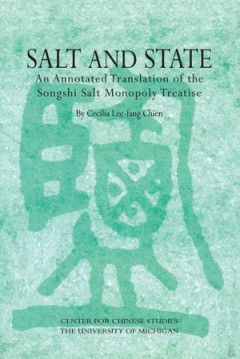
Salt and State: An Annotated Translation of the Songshi Salt Monopoly Treatise
Salt and State is an annotated translation of a treatise on salt from Song China. From its inception in the Han dynasty (206 B.C.–220 A.D.), the salt monopoly was a key component in the Chinese government's financial toolkit. Salt, with its highly localized and large-scale production, was an ideal target for bureaucratic management.In the Song dynasty (960–1279), fiscal pressures on the gov…
- Edition
- -
- ISBN/ISSN
- 9780472901456
- Collation
- -
- Series Title
- -
- Call Number
- 301 CHI s

The Red Spears, 1916–1949
Before Tai Hsüan-chih’s work on the Red Spear Society, the subject was a little understood movement that seemed of only passing interest to scholars of China—intriguing for its peculiar beliefs and rituals, perhaps, but hardly of central importance to modern Chinese history. Today, however, thanks in no small measure to the pioneering work of Professor Tai, the Red Spears have gained a sec…
- Edition
- -
- ISBN/ISSN
- 9780472901876
- Collation
- -
- Series Title
- -
- Call Number
- 302 TAI r
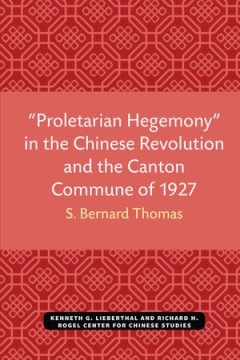
Proletarian Hegemony” in the Chinese Revolution and the Canton Commune of 1927
The Communist aim of proletarian hegemony in the Chinese revolution was given concrete expression through the Canton Commune—reflected in the policies and strategies that led to the uprising, in the makeup and program of the Soviet setup in Canton, and in the subsequent assessment of the revolt by the Comintern and the Chinese Communist Party. “Proletarian Hegemony” in the Chinese Revo…
- Edition
- -
- ISBN/ISSN
- 9780472901883
- Collation
- -
- Series Title
- -
- Call Number
- 301.951 THO p
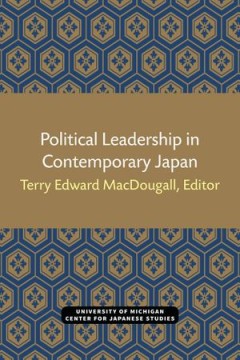
Political Leadership in Contemporary Japan
Those who do not read Japanese seldom have access to analytic studies of the fascinating and surprisingly diverse world of contemporary Japanese political leadership. This volume constitutes a step toward bringing to the English reader some sense of the norms, beliefs, styles, and modes of exercising power of Japanese political leaders and the organizational and political contexts which are cha…
- Edition
- -
- ISBN/ISSN
- 9780472901982
- Collation
- -
- Series Title
- -
- Call Number
- 320 POL p

Poems of the Five Mountains: An Introduction to the Literature of the Zen Mon…
This second, revised edition of a pioneering volume, long out of print, presents translations of Japanese Zen poems on sorrow, old age, homesickness, the seasons, the ravages of time, solitude, the scenic beauty of the landscape of Japan, and monastic life. Composed by Japanese Zen monks who lived from the last quarter of the thirteenth century to the middle of the fifteenth century, these poem…
- Edition
- -
- ISBN/ISSN
- 9780472902156
- Collation
- -
- Series Title
- -
- Call Number
- 895.6 URY p

Play Redux: The Form of Computer Games
Play Redux excels in tying together intellectual traditions that are rooted in literary studies, cognitive science, play studies and several other fields, thereby creating a logical whole. Through this, the book makes service to several academic communities by pointing out their points of contact. This is clearly an important contribution to a growing academic field, and will no doubt become im…
- Edition
- -
- ISBN/ISSN
- 9780472900398
- Collation
- -
- Series Title
- -
- Call Number
- 794.8 MYE
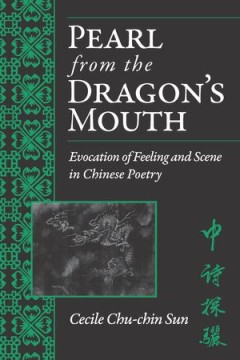
Pearl from the Dragon’s Mouth: Evocation of Scene and Feeling in Chinese Po…
The interplay between the external world (ching) and the poet’s inner world (ch’ing) lies at the heart of Chinese poetry, and understanding the interaction of the two is crucial to understanding this work from within its own tradition. Closely coordinating her discussions of poetry and criticism so that practice and theory become mutually enriching and illuminating, Sun offers sensitive and…
- Edition
- -
- ISBN/ISSN
- 9780472901357
- Collation
- -
- Series Title
- -
- Call Number
- 895.1 SUN p

Antisemitism and the left On the return of the Jewish question
Universalism has acted as a stimulus for Jewish emancipation, that is, for civil, political and social inclusion. It has also been a source of anti-Jewish prejudice up to and beyond the classic antisemitism of the modern period. While the experience of Jews is by no means unique in this respect, one of the peculiarities of the 'anti-Judaic' tradition has been to represent Jews in some important…
- Edition
- -
- ISBN/ISSN
- 9781526104960
- Collation
- -
- Series Title
- -
- Call Number
- -
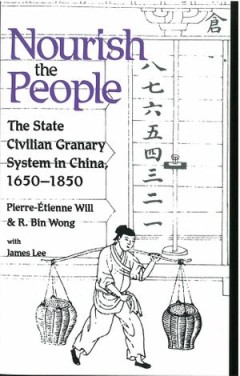
Nourish the People: The State Civilian Granary System in China, 1650–1850
The Qing state, driven by Confucian precepts of good government and urgent practical needs, committed vast resources to its granaries. Nourish the People traces the basic practices of this system, analyzes the organizational bases of its successes and failures, and examines variant practices in different regions. The volume concludes with an assessment of the granary system’s social and econo…
- Edition
- -
- ISBN/ISSN
- 9780472901821
- Collation
- -
- Series Title
- -
- Call Number
- 951 WON n
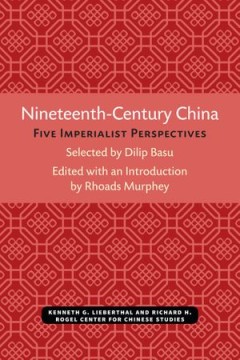
Nineteenth-Century China: Five Imperialist Perspectives
Materials from the past that wrongly anticipate the future, or present information or judgments that are later proved misleading or erroneous, are sometimes overlooked in reconstructing the past. Yet such documents are as legimiate, and perhaps as important, as those that are vindicated by events or continue to share perspectives with later generations. The five documents reproduced in Ninet…
- Edition
- -
- ISBN/ISSN
- 9780472901364
- Collation
- -
- Series Title
- -
- Call Number
- 951 NIN n
 Computer Science, Information & General Works
Computer Science, Information & General Works  Philosophy & Psychology
Philosophy & Psychology  Religion
Religion  Social Sciences
Social Sciences  Language
Language  Pure Science
Pure Science  Applied Sciences
Applied Sciences  Art & Recreation
Art & Recreation  Literature
Literature  History & Geography
History & Geography